First the graphs…
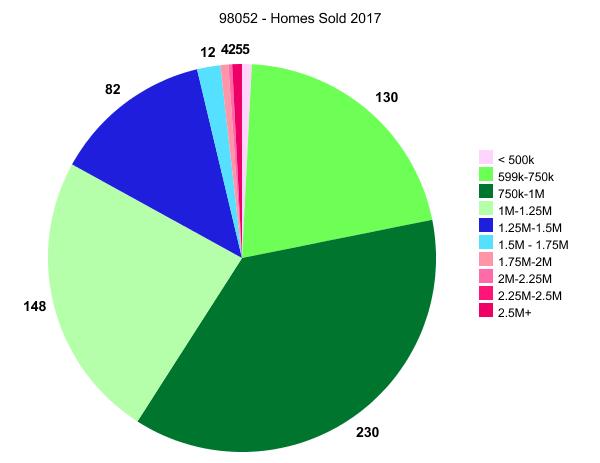

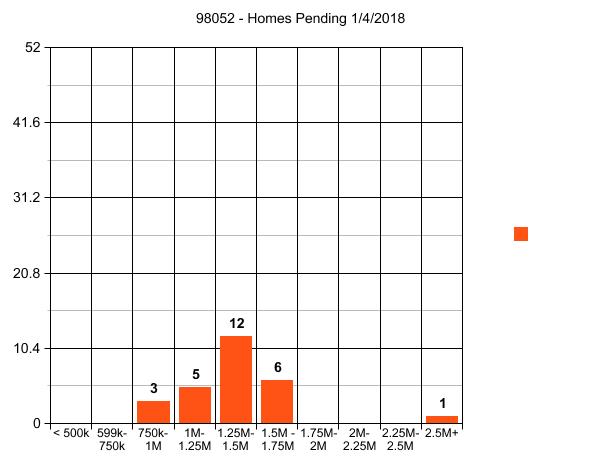 2018 Home Prices in Kirkland 98033
2018 Home Prices in Kirkland 98033
2018 Home Prices in Kirkland 98034
Category Archives: First Time Buyers
Best Place To Live – Testing Your Parameters
 Seattle Area – Choosing Best Place to Live. I recently received a request to write a new post on this topic. Even I find most of the articles I have read on this topic to be very confusing. Like this one that mixes a few “Really?!?” with the obvious best places. Or this one that jumps from one extreme to the other pretty quickly back and forth.
Seattle Area – Choosing Best Place to Live. I recently received a request to write a new post on this topic. Even I find most of the articles I have read on this topic to be very confusing. Like this one that mixes a few “Really?!?” with the obvious best places. Or this one that jumps from one extreme to the other pretty quickly back and forth.
If you are renting vs buying you can use the lists of Best Places to Live in the Greater Seattle Area pretty freely, as you can skip around at the end of each lease until you find a place you may want to permanently call “home”. But if you are buying a home, you need to dig a lot deeper before spending your hard earned money, as switching out is costly and easier said than done.
Since this post is by special request, I asked the requester to give me some basic parameters he has set before beginning his quest as to where to find that type of home, at that price, in the “best” area his money can buy.
With inventory so very low and “best” homes in best areas selling very quickly and often with multiple offers, you can shorten your time frame dramatically by testing your parameters in advance. This way you will not be waiting and waiting for something that simply does not exist in the area you have targeted to search.
Again, these are parameters given to me by an unknown person in an email request to write this post, and not necessarily in the order given.
1) SCHOOL RANKING
The stated objective was:
Elementary School Ranking = 9
Middle School Ranking = 9
High School Ranking = 9
I think we can assume that this person is referring to GreatSchools.org when noting a 9 ranking. The thing that strikes me as odd is that there is a specific number vs a range like 8 to 10. Many if not most of my clients who have school ranking as one of their parameters will most often want 8 to 10 rank for Elementary School. That is a reasonable and common request at Elementary School level but not on all 3 levels.
What bothers me most about someone asking for “a 9 ranking” for school is it leads me to the conclusion that this person thinks school ranking number is a constant vs an ever changing number.
Let’s jump to the areas noted by the person who requested this post and see how this one main criteria alters and narrows even these modest area parameters. Referring to the photo above, nothing “paints you into a corner” faster than School Ranking as a parameter.
“Hopefully Eastside, Bothell, Kirkland, kenmore, Issaquah, Sammamish.”
There are only a couple of high schools currently ranking as high as 9 or better in Seattle. But since this person noted Eastside let’s skip over that for a minute except to say Ballard High School riding high at 9 right now is a big factor in the price run up there.
Kirkland is out, though one of my personal favorite Best Places to Live, given there are only two high schools Juanita weighing in at a 6 and Lake Washington High School weighing in at a 7. I clearly would not rule out Kirkland, but when I first saw this email I thought, well I guess it’s going to be Sammamish…maybe Issaquah, to get all 3 schools ranking as high as a 9.
Bothell High School is running at a 10 as is Inglemoor in Kenmore. Would I or most of my clients exclude Kirkland in favor of Bothell or Kenmore? Not usually. So really have to be careful about the corner you are painting yourself into with this requirement. All things considered, some of which are not in this post yet but are in the email, I’d still be at Issaquah-Sammamish and probably Issaquah I-90 corrider for this particular person.
My general advice for people planning to have children or with very young children just starting school, is to set your ranking based on Elementary School only. Middle school is a can of worms mostly having to do with puberty. Limiting by High School rank leads you into a very small corner, which may be fine as long as you happen to like that particular corner.
– Below $425,000 (may be even going up to $500,000)
– single family home
– town home with no to very low HOA
– area where property value is appreciating. If I buy now (resale after 5 years should be a profit)
– crime should be low
– commuting to Downtown Seattle should be good.
– King County
– newer construction
– few foreclosures in the general area
– areas with construction quality/grade of 8 or more.
Let’s hit these quickly:
King County OK though you can find lower prices outside of King and the Bothell option changes since most of Bothell is not IN King. I’d still be at Issaquah for that reason.
Newer construction…well depends on how you define “newer” but lets say 1995 or newer since home styles haven’t changed much in that time frame.
Few Foreclosures in the general area – When you have a school ranking of 9 or better and a low crime criteria, you usually don’t run into foreclosures generally except in a neighborhood where everyone bought at peak because it was built and sold at peak.
Low Crime is a given on the Eastside for the most part in the Cities mentioned, so not a big factor.
Commuting to Downtown should be good is where I get stuck as to Kenmore which is not known for its “quick commute” to most anywhere.
That leads us to the big one…price.
PRICE OF HOME
I ended with price, but in real life vs a blog post I START with price, because nothing draws a hard line faster than how much you can afford to spend.
I’m thinking Single Family Home is now out of the question and we are moving straight to townhome if “newer” is 20 years or less and High School is 9 or 10. Then we run into HOA dues that are likely going to be considered excessive. Let’s assume for a minute HOA dues of $300 a month and an interest rate of 3.75%. Now we move price to a $425,000 Townhome or a $485,000 Single Family Home being the same, given the $300 monthly dues value at $65,000 of price.
Here’s where the person who asked the question gets to go back to the drawing board with these questions.
1) If Kirkland only has two High Schools ranked 6 and 7 are you ruling out Kirkland altogether?
2) If the only place in Bothell that meets your parameters is in Snohomish County vs King County, do you drop the King County requirement? Bothell runs into 3 or 4 different School Districts pretty quickly.
3) If the only way to get a Single Family Home is to buy an old one vs a new one, do you stop at townhome or change the age of home criteria?
Without having to change anything you can get a newer 3 bedroom townhome in Issaquah High School…possibly Skyline High School, and pretty easily match that up with a high ranking Elementary and Middle School. Many if not most of these are close to I-90 for a pretty fast commute into Downtown Seattle. If 1995 to 1998 Single Family Home appeals to you more than a new or newer townhome, then Issaquah still an option.
Play with your own parameters now. Go to GreatSchools.org and put in the Cities you are considering and set the High to Low on Rank and you will easily see which schools you want to consider, or not, and note them by name. Once you have your complete list of schools it is easy for your agent to find the neighborhoods within those schools that fit your price parameters.
Point being that when you are using school ranking as a consideration you start there and you, the buyer, do the research to make an accurate and complete list of all schools that are an option for you. It is a parent’s job to pick schools…or not. When using this method it is then better to have an agent set you up in the mls for alerts than to use a public site, since it is pretty much the only place where you can put in a big list of schools vs setting up separate searches for each school. That still leaves you in a bit of a jam since individual schools is not a “required” data field. BUT if you start at finding the neighborhoods by looking at sold property over the last year or more…well, it’s a good start and good luck.
Personally, and for most of my clients, they pick their BEST WHERE first…and then find the best schools in that where, vs painting themselves into the corner of only being able to live in one place. Overall if this were my client I’d be adding Redmond to the mix and then choosing between Issaquah and Redmond.
As to Grade 8 or better as to construction, that’s pretty much a given after piling in all of your other parameters. 8 is not very high as to quality grade and new or newer construction is usually an 8 or 9 in modest price ranges. I just spot checked several and most all in that price range are an 8. So leave that check point for last after you find a home and before you make an offer.
Home Buyer Education Seminars
I am teaching two Home Buyer Education Classes this month sponsored by the Washington State Housing Finance Commission. Anyone who is interested in buying a home can attend – our class is not limited to first time home buyers.
Home buyers who are interested in programs offered through the Washington State Housing Finance Commission, such as the Home Advantage Program with down payment assistance, are required to take a WSHFC sponsored class.
If you’re interested in attending a class where I will be teaching, you have two opportunities this month:
- Saturday, July 13, 2013 from 11:00 am to 4:00 pm in West Seattle at the High Point Library. My co-instructor is Ira Sarachoff.
- Saturday, July 20, 2013 from 11:00 am to 4:00 pm at the Greenlake Library in Seattle. My co-instructor is Jim Reppond.
Lunch is being provided at both of these classes… however, if you have dietary restrictions (or you’re a picky eater 🙂 you may want to bring your own sack lunch.
Both classes are FREE. If you’d like to attend, you can rsvp here.
I’ve always felt that an important part of a mortgage originators job is to educate their clients and make sure their questions are answered before they get to the signing table. I’m very excited to be a part of the Washington State Housing Finance Commission’s program.
Where Should I Live?
Not every client asks me where they SHOULD live. But the question comes up from time to time, and often from family members who are considering jobs in more than one city.
I am answering a more complex one for a family member who hopes to purchase a home vs rent. Scenario is they are graduating with an RN and looking at:
Los Angeles $82,000 Salary
Seattle $74,000 Salary
Colorado $71,000 Salary
The issue when people ask me is usually whether or not the salary differential makes up for the difference in the cost of the housing in various places. The offered salary is $11,000 more in Los Angeles than in Colorado, but does that compensate sufficiently for the difference in housing cost? In the past the scenarios presented to me were about renting vs buying, and often the differential did make up for that difference in rental cost. But when someone is buying vs renting…not necessarily the case.
In this particular example I am looking at Entry Level housing, VA Loan with zero down and a family that already has two children and is planning to have more children. So I need at least 3 bedrooms on this entry level housing.
Starting with “Seattle”…I know that the person is interested in The Eastside Cities of Kirkland, Bellevue or Redmond. For this “entry level” example, I am going to use a home that closed on Wednesday for one of my buyer clients BUT putting in the loan scenario of the family member of mine who is asking the question.
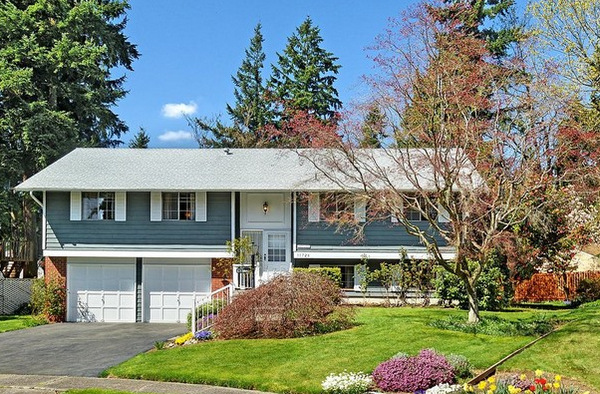
Price SOLD is $355,000. Plenty of space and yard for a growing family. Cul de sac lot. Could use some updating, but no expensive fixes needed. Had one owner for 44 years since it was built, in 1967. A good indication that a family can live there indefinitely without needing to upgrade to a larger home.
Now we’re matching this home purchase up to the above RN Salary for “Seattle” of $74,000 for the person asking the question, vs the person who actually bought it the other day.
First we’ll use the “rule of thumb” of 3 to 4 times annual income for the loan amount. That would put the loan, based on $74,000 Annual Income, at $222,000 to $296,000. A little short based on Zero Down for this home.
I’m going to move this WA scenario over to a home I sold in Mt. Lake Terrace that is a similar home, big lot, with a one car vs two car garage, but that sold for $250,000 vs $355,000. Edmonds School District. A reasonable example for Mt. Lake Terrace or Brier.
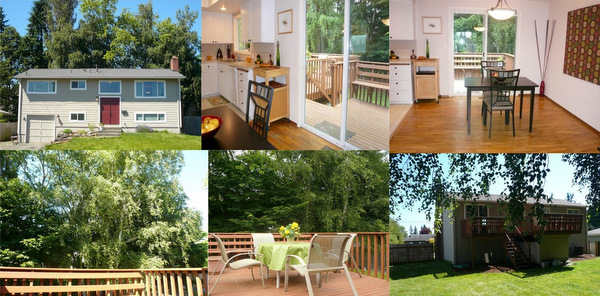
Now we go back to our 3X to 4X Gross Annual Income “rule of thumb”. and we can fit $250,000 into that $222,000 to $296,000 equation without approaching the upper limit. NEXT we go into the actual real detail of payments, which isn’t worth doing if the Rule of Thumb = No Way, Jose.
Conservative numbers put monthly housing payment, whether that be rent or mortgage payment, at 28% of MONTHLY GROSS income. VA guidelines are usually 40/40 ratios, allowing people with no debt to put the entire debt budget on home. This Family is a Zero Down…but also a Zero Debt, so they can go somewhere between 28% and 40% as the housing payment.
I am not a Lender…so you have to check the ratios with an actual lender before making offers, but since I don’t recommend going to 40% on housing payment even if you have no debt…as you may incur debt at a later point, let’s proceed.
This family would have ZERO Closing Costs on the above $250,000 scenario as they can be included in the price with a Seller and/or Agent Credit to cover the Closing Costs entirely. So we don’t have to factor in Closing Costs on the WA scenario. That will change for the other cities.
Rates are very low today…too low to use for this scenario, so I’m going to pump the rate up to 3.75%. We are going to stack the VA Funding Fee on top of the price for Loan Amount and Payment purposes. That amount is $5,375. It can be fully or partially paid as part of the Closing Costs, but let’s assume a stack on this one taking the Loan Amount up from $250,000 to $255,375 at 3.75% is . Property Taxes are $250 a month. Homeowner’s Insurance is $50 a month.
NOTE: There are different VA Funding Fee rates for different scenarios. Putting 5% vs ZERO down can reduce the Funding Fee by almost 2%. I have used a rough scenario based on the person who asked the question. These Funding Fee rules change from time to time, are different for Refinance vs Purchase Loans, whether you were in Regular Military or National Guard and whether it is a 1st time or subsequent use of the privelege. See your local lender for specifics.
OK…back to the payment on the $255,350 Loan Amount at 3.75%. $1,182.57 for the Principal and Interest plus $250 for RE Taxes plus $50 for Home Insurance (Fire, etc.) gives us a monthly payment of 1,482.57. That happens to be pretty close to what the home would rent for, probably less than rent for this style of home in other nearby places like North Seattle or Lake Washington vs Edmonds School District. Not sure about Northshore School District, which would also be in the mix as to Bothell homes. But all in all, a good basic scenario.
Back to $74,000 Salary in WA and $1,482.57 a month housing payment. $74,000 Annual Gross Income divided by 12 gives us $6,166.67 Gross Monthly Income which puts $1,482.57 a monthly PITA at 24% of gross. At 40% of Gross Income the monthly housing allowance would be substantially more at $2,466.67. $2000 a month PITA would be a loan amount of $430,000. hmmmm.
Let’s go back to the Rule of Thumb. $430,000 is 5.81 X Annual Income vs 3 to 4 times Annual Income. Low Interest Rates do impact this rule of thumb issue, but still…going over 4X Annual Income just doesn’t look right.
Let’s go back to the first house at $350,000. That payment would be $1,679.41 plus taxes of $330 a month plus insurance of $75 a month would be $2,084.41 a month or 34% of monthly gross income. That’s really enough to spend on housing, and likely appropriate in this case as we are only using one income at an entry level salary. So the payment will become more affordable with some supplemental income from the other spouse and future raises.
So let’s say either of the above examples will work…as well as something in between.
That’s the hard part. Now let’s throw up a $250,000 home and a $350,000 home in Colorado in the Cities of preference as noted by the person asking the question.
Most Every Home in Parker Colorado fits the bill. No problem there. So Parker Colorado, even at a few thousand less in Salary down from $74,000 in WA to $71,000 in Colorado…very easy to get a house for $300,000 give or take.
This big 5 bedroom, 3,200 sf home in Parker is listed at $314,900 and there are plenty of others to choose from. Easy to see why Parker Colorado made the list of options.

Castle Rock, another choice in Colorado, is even lower priced. This new 3,530 sf new home is listed at $288,000. But Parker doesn’t seem so far out of the way, and is plenty affordable.
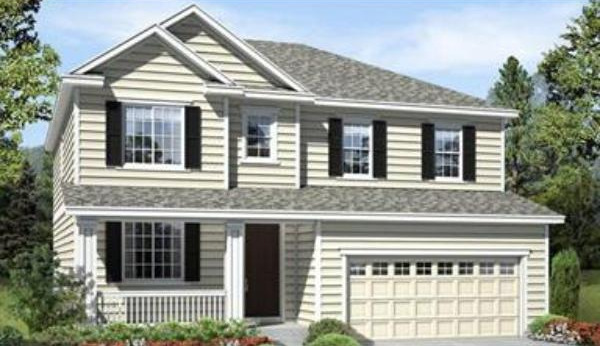
That’s all I can say about Parker and Castle Rock Colorado, as I don’t know the area at all. It works, so it would depend on the salary offers in the various locations. WA works. Colorado works. Now to L.A.
We have a bit more room here, as the salaries are higher by $10,000 or so as the average. Using the same 34% of Gross I used above vs the 40% allowance, and using $82,000 as Gross income is $2,325 for housing payment. Let’s use $1,900 after taxes and insurance. That gives us a home price of $400,000 allowing the extra $10,000 for VA Funding fee on top of the mortgage.
What does that buy in L.A. in the specific areas of interest?
It doesn’t buy us anything in Walteria, one of my favorite not too Ritzy places. 🙁
It doesn’t buy us anything in Redondo Beach, even when I throw in 3 bedroom condo-townhomes.
There are a few in NW Torrance that would work, but they are short sales, so not sure if that price is reflective of “the going rate” for the area.
This 3 bedroom 2 bath, 1,468 sf home at $365,000
This house looks nice, but you can see a huge electrical tower behind the house.
Obviously L.A. is not as doable as WA or CO, so the salary difference would have to be higher. If the salary offer in L.A. was double that of WA and CO…well we can revisit this. But for a small difference…may not be worth it.
Let’s find an L.A. house and work the salary backward.
Well…I can’t find any for sale BUT the GOOD NEWS is I did find a few in Redondo Beach that SOLD. So the answer is there are a few…but the sell very quickly.
This one sold for $419,000. It’s only 914 sf though. 3 bedroom, 1 bath, but small. Nice sized lot and yard though…and it is warm and sunny enough to be outside most of the time year-round, unlike WA and CO.
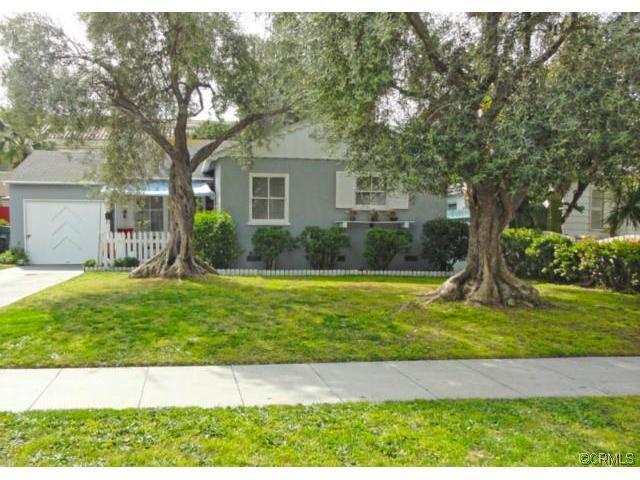
This 3 on a lot sold for $410,000. Nice Street. 1,612 sf with 3 bedrooms and 2.5 baths.
BOTTOM LINE: All three are potentially doable…enough so to put out resumes in all three areas and see what kind of offers come in. WA is probably the best option for several reasons. L.A. is doable IF the salary offered is high enough…OR…if you rent for a bit until the salary improves by raises. Parker vs Castle Rock is probably an excellent option. Depends on how close to the actual work site they would be.
The purpose of answering the question “Where Should I Live?” is not to really answer the question, but to give some food for thought. There are some other considerations like schools and safety, but I already know the not Colorado options well enough to factor that in and the Colorado Cities seem to have pretty much ALL good schools. There are a couple of exceptions in Castle Rock, and I still prefer Parker for several reasons, but most Castle Rock Schools are pretty darned good except for one or two.
Shooting this link to the person who asked the question. Hope it helped someone else with the general “thought process” and work through format. No matter where your thoughts travel as to “Where Should I Live?”, it’s not to hard to do a comparison based on Salary Differences and Home Price differences. The cheapest homes are not always the best choice…nor is the highest salary.
Of course I’d have to say WA vs CO, but to compete, I’d have to throw in a nice looking house for $350,000 in Duvall. 🙂
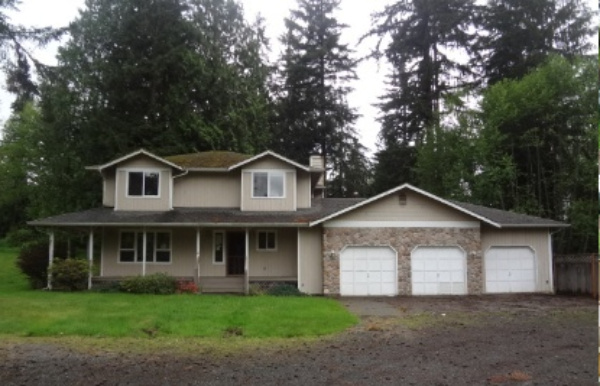
Buying New Construction – Choosing the Lot
The first step in buying a new construction home, unless it is an already built “spec” home, is to choose the lot. However, not all lots can hold all homes. So to some extent you have to choose both the home to be built and the lot at the same time.
Let’s look at a small subsection of a fairly standard looking new construction development as to variations of lots available.
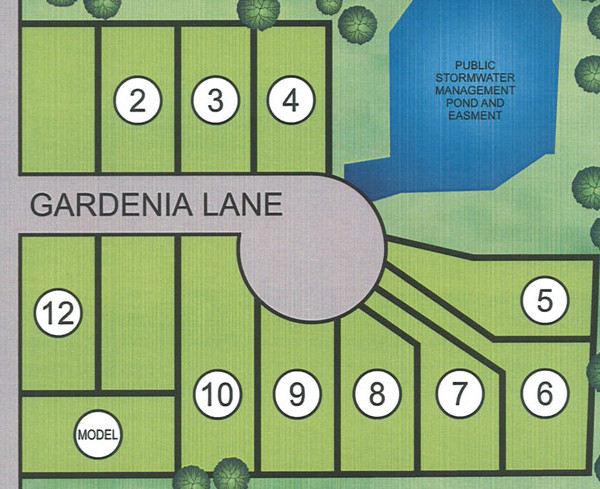
Choosing the lot is likely the most critical phase of buying a new construction home that is not a spec home. It used to be a lot easier to pick the best lot…or at least a good one. A standard lot was built into the price of the home and there was a “lot premium” for the other lots. Let’s say the lot premiums ranged from $2,000 to $15,000. That gave you a gauge as to how much better than a standard lot, the lot you were selecting was.
Unfortunately those days are gone and most salespeople will tell you they are all “best” lots.
Looking at lots 1,2,3 and 4, lot 4 would usually have a premium as it sides to an “open space”. You might say the same for the corner Lot 1. But if the street to the left of Lot 1 is a very busy road…now it is a lesser lot without benefit of no neighbor to the left. In essence your “neighbor to the left” is a bunch of dirty, noisy traffic. Some people feel the same way about the drainage basin to the right if it is ugly and attracts mosquitos. Sometimes people think the drainage area is going to look like a “pond” the way it states on the site plan…and sometimes it does. But more often it looks like an unkempt ugly drainage pool.
Trees? Good Drainage Issues? Can you see a green, yellow, red blinking street light from your master bedroom window? All too often someone picks the lot without standing on the lot…bring a ladder. Stand higher. 🙂
Choose the best lot and the worst lot and assign values from there. Don’t do this from a site plan like the one above without walking the entire area to see what is on the outside of those perimeters. Will there be more new homes to the North or are there existing run down homes with a few junkyard dogs.
You have to get very close to picturing the home on this lot the same way you would if you were buying an existing home on that lot. This is VERY difficult for most people.
Generally speaking only people who buy the BEST lots choose the lot and build from scratch. It makes little or no sense to build a home on a substandard lot vs waiting to see what the home looks like on that lot.
So if all of the best lots are gone…you are often better off buying a spec home or a newer resale home, than building on a substandard lot with no recourse to not “like” it once the home is put on it.
New Construction is not for everyone. If you can get the biggest and best lot in the neighborhood…go for it! The end result can be very rewarding.
Low Inventory? Be Pro-Active
Low Inventory continues to be an issue for many. This weekend there were so many people at one of the houses I was showing, buyers with their agents, that it looked like an Open House. A few days before agents and buyers were standing in line out front (different house) waiting to “show”.
This is often the case with new listings this time of year, and just because there is a crowd in the first few days does not mean the house will sell in short order. The first one I mentioned did have 5 offers by late afternoon, but the 2nd is still Active with no offers.
One of the ways to be pro-active about inventory is to identify what you want in advance. If you have seen many houses over the last 6 months to a year and know which neighborhoods you want to live in, you can contact owners to find the one or two who are planning to list their homes in the next several weeks. It could give you a leg up.
I have a client who wants to spend about $400,000 for a house in X area. The best homes at that price are in X neighborhood. Only about 50% of the homes in that neighborhood fall at that price. You should not contact ALL of the owners in that neighborhod. Rather sort by square footage and assessed value.
1) If you know the minimum size of home you want is 2,200 sf, then first eliminate all of the small homes from the list using the tax records.
2) If you know you want to spend no more than $400,000 to $450,000, and all of the recent sales in the neighborhood have been at roughly 1.13 X Assessed Value (which is about the “going rate” right now for good areas and homes) you can next sort by Assessed Value. The lower valued homes you likely already ruled out based on square footage. So in the 2nd sort you are knocking off those that will sell for more than you want to spend. If 30% of the homes are assessed at more than $450,000, you can knock those off the “pro-active” list. Doesn’t mean one might not hit the market as a short sale or REO listing. Just means they are not the “target” for pro-active contact.
Now you have a nice list of 50% of the homes in the neighborhood that should be large enough for you, and should sell at the price you want to spend. Odds are maybe at least one or two of those are thinking about selling this Spring, and will be happy to not have to worry about whether or not it will sell. They may receive your letter and be very happy to have a ready, willing and able buyer without having to list their home.
I am not saying that is the best way for a seller to approach selling their home…but for a buyer who is fed up with the waiting game, only to find 5 offers when a suitable house comes on market, this is not a bad way to jump to the front of the line.
Being Pro-Active vs Reactive also feels like you are doing something to reach your objectives, and can be a very rewarding strategy.
Seattle 4/3 Cape Cod with a View
Some time ago I wrote about Seattle Starter Home Styles and we talked about the value of having bedrooms up above the main floor vs down in the basement. While that would describe most any 2-Story home, before we get to 2-Story we have the one and a half story “Starter Home” Style. This one happens to be a Cape Cod…
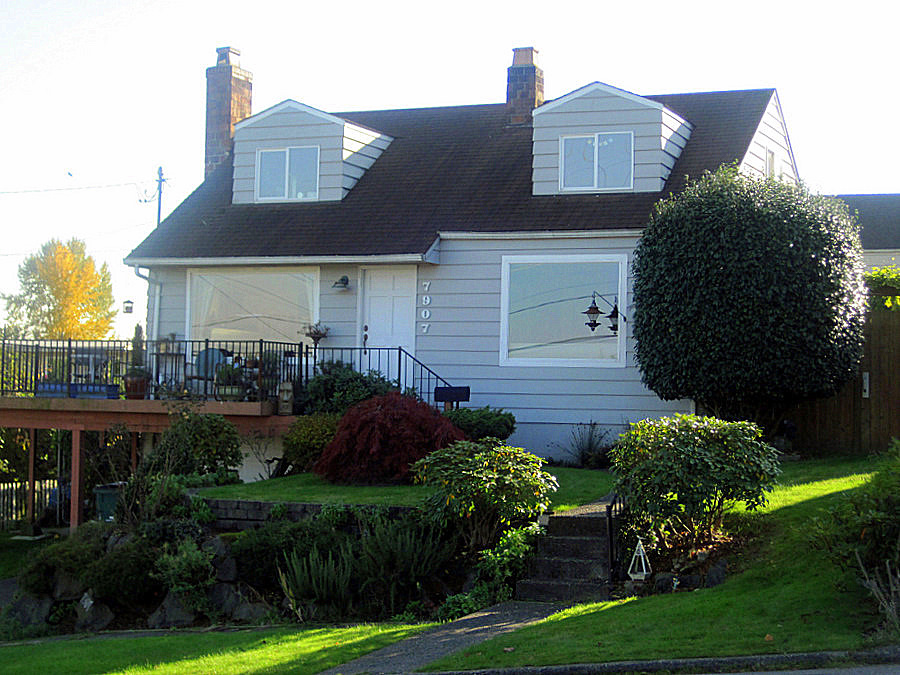
with a view.
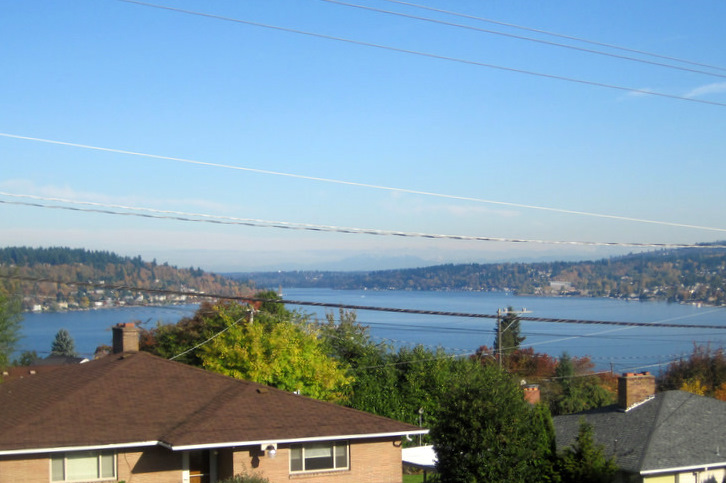
I am reminded while listing this property of The Tim’s comment of another home featured over on Seattle Bubble:
“The listing agent claims that the home’s architectural style is “Cape Cod,
The High Cost of Buying a Home & Selling a Home
Even if you are a First Time Homebuyer, you should be keenly aware of the cost of selling a home. Often people think they can just sell their home if they pick the wrong one, or if they get a new job out of town. But the cost of selling is usually many Xs the cost of buying.
It is good to be mindful of the cost of leaving…the home you are buying…before you buy one.
The Closing Costs/Expenses associated with Selling a home are fairly simple, but in $ much more costly than a Buyer’s Closing Costs. Also a buyer can pay ALL of their costs without “hard dollars” in most cases. A Seller is not afforded that “convenience”. Sometimes homebuyers call financing their closing costs “seller paid them”…but in reality the seller is not paying them…you are financing them in whole or in part, unless you are a cash buyer.
The three BIG costs for sellers are”
1) Paying off your existing mortgage(s) and other lienable utilities (Usually water sewer and trash) Not a “Closing Cost”, but likely the largest expense nonetheless. Be sure to add one month’s interest to your principal when estimating your payoffs, which you should do before you list your house to avoid surprises at closing.
2) Paying the Real Estate Agents, both your agent and the buyer’s agent, will be deducted on the seller side of the Closing Statement from the Sale Price and Net Proceeds.
3) State Excise Tax at the rate of 1.78% of the sold price.
RE Commissions & Excise Tax = the big bulk of true “costs” associated with selling a house. These on a combined basis usually range from 6% to 8% of the Sold Price depending on what services you use.
Note: The buyer determines what service and/or representation they will use when purchasing a home, and who will provide them with that representation/service. But the cost of the Buyer’s representation will still be deducted from the Seller’s Net Proceeds IN FULL, even if the cost is less than the Seller anticipated. Generally the rule is the Seller can negotiate the cost for the Seller Services, but any savings on the Buyer side commission goes to the Buyer…even though that commission shows and is deducted on the Seller side.
Other Seller Costs:
Owner’s Title Insurance – price dependent, but not a %. The Agent for the Seller usually orders Preliminary Title before listing the house. So you can get a quote. About $1,000 give or take? Depends on price of home within a few ranges of price. The cost doesn’t go up by each $ of price. Here’s a Title Cost Calculator but you have to sign in. Maybe a Title Rep will pop in the comments and give more info on that. I’m seeing a range from $850 to $1200, even though the price difference on the two houses is HUGE! So plan on $1,000 or so, and get a quote as soon as you pick a listing agent/service.
Seller’s “half” of the Escrow Fees – usually quoted as half…so don’t take the quote and half it again. About the same as Title Insurance, give or take, with the same method of calculation. DO NOT take the election for the $50 discount if YOU use the same place for Title and Escrow! You pick Title and let the BUYER choose escrow. (my soapbox…buyer should choose escrow!)
A couple of misc fees like notary or courier and what not. Throw $500 in misc and that should be more than enough.
Summary of Seller costs =
RE commissions for BOTH agents/services. Usually 4% to 6% +
Excise Tax 1.78% +
Title Insurance , Escrow Service and Misc – total $2,500 or so
…and paying off your mortgages and lienable utilities and any other liens needed to be cleared from the property. Usually there aren’t others, but there could be unrelated liens like Income Tax, or Judgments. That is why the Agent for the Seller runs Title before the home is listed, to avoid surprises at closing.
Add to that your prorated Real Estate Taxes for the time you live in the house since the last tax bill was paid. That varies depending on the month you close. Conversely you will get a credit from the buyer if you paid those taxes in advance.
HOME INSPECTION REPAIR COSTS – DO NOT list your house without setting aside an amount for the Home Inspection Negotiation. How much you should set aside differs from one house to the next, and your agent should be able to give you a rough estimate. It depends on the age of your roof, heater, hot water tank, etc. It does NOT depend on whether or not those things function well!
AGE! Age of item is now the issue…not merely it’s condition. I do not recommend that the seller do an inspection before listing the home. But that’s another topic.
In a nutshell…if a seller is selling a home for $400,000 and has NO mortgage to pay off, their total costs will be about $30,000 – $40,000! Lots of costs for the seller.
********
HOME BUYER CLOSING COSTS and EXPENSES
If you are paying cash for your house…the only real costs are:
Escrow Closing Fee plus some misc charges like Recording Fee. $1,000 give or take. You still have to or should get Insurance (fire insurance, etc)…but escrow will not be requiring that in order for you to close, and may not handle it for you if you are a cash buyer. You will HAVE Owner’s Title Insurance…but that is paid for by the seller.
The closing costs jump up from $1,000 CONSIDERABLY when you are using financing to purchase…and many if not most people are.
The largest cost for a Homebuyer, potentially, are the Lender Fees. That said, more and more people are electing to NOT have Lender Fees. That creates a “higher” rate…but when that higher rate is 3.875%…it doesn’t seem high. So negating the lender costs is more common during a period of low rates than it is during a period of higher rates. No good reason for that, as the increase to rate as a % is the same…just is what it is.
Lender Fees can be anywhere from almost nothing to 1.50% or so. So shopping for costs AND rate is a big job for the homebuyer.
I’ll let the lenders jump in the comments and explain that better. Often you will see lender costs of $4,500 and then a Lender Credit against those costs of $4,200 reducing the actual cost to $300. That is a means to the almost no lender cost solution. You still have to sign disclosures for the actual costs, even though the net impact will be much lower. Again…I’ll leave that to lenders to explain, I can only tell you that is what I see, but not the why of it.
You need Lender’s Title Insurance. The Seller paid for Owner’s Title, which is all you need if you pay cash for a house. But if you have financing you need to purchase Lender’s Title which is based on the Loan Amount vs the Purchase Price. About $1,000 give or take.
Home Inspection and Appraisal Fees ($450 or so) and other misc loan associated costs I include in “lender fees” above. Though if you don’t buy the house…you still have to pay the Appraiser. So Home Inspection Fee and Appraisal Fee of $1000 or so usually have to be paid even if you don’t end up closing, after those are completed.
NOTE: You may need MORE than “a home inspector” depending on the house. Sewer Scope by a different contractor…Structural Engineer Evaluation depending on the house…drain inspection if there are cement drain systems, which many have. I’m not going to run the gamut of extra inspections that may be needed, as this is a house to house issue. But DO KNOW that most Home Inspections do not do all of the inspections you may need for a particular home. It depends on the home.
Half the Escrow Fee…same as Seller…again what you are quoted IS half…so don’t half it again.
One Year Paid up Fire Insurance Policy = paid at closing. I am calling it Fire Insurance so you don’t get it confused with Owner’s Title Insurance. It covers more than fire, but in my experience if I don’t call it Fire Insurance, people do not totally “get” what I mean when I say Hazard Insurance or Homeowner’s Insurance. Fire Insurance everyone understands…even though that insurance covers more than damage from a fire.
Note: Cost of Homeowner’s/Hazard/Fire Insurance is whacky right now. Be sure to get a few quotes and make sure they are running your history of previous claims. People with previous claims on the homes they have owned in the past are paying through the nose lately. So don’t only go by the house itself…get a REAL quote and early. Usually right after the Home Inspection.
Recording Fees about $150 to $200 depending on how many loan instruments you are recording. Just throw in $500 for misc, same as the seller.
TOTAL ACTUAL COSTS FOR A HOME BUYER
Lender Fees+ Home Inspection and Appraisal Fees + Fire Insurance (one year paid in advance) + Lender’s Title Insurance + Escrow Closing Fee + Recording Fees + $500 misc. I can’t even give you a total number, as these vary greatly due to the Lender Fee issue. But let’s say it’s usually around $7,500 or so, depending on the Price of the Home. I’m only putting a number so you know it’s not a few bucks, and something you need to prepare for with your Agent before you make an offer.
Notice I said prepare for with your AGENT and not your LENDER! I know it is customary around these parts for The Lender to “do that”. But why? Really? The biggest buyer side closing cost on the HUD 1 to evaluate is the Lender’s Fees. Your agent needs to help you with that…not your lender, because you need to do that BEFORE choosing a lender, and as part of the basis for choosing a lender.
A note about Real Estate Commissions…it’s a tough issue on the buyer side because it was already negotiated with the seller and often not discussed with the buyer. MAKE your agent talk to you about what they will being paid to represent you. You must have that talk…and often you need to initiate that discussion.
CLUE: “The seller pays it” is NOT the answer to How much is your agent charging for the service to YOU. “I don’t know yet” could be the answer to the question, as what the seller is offering to pay your agent varies from one house to the next. You and YOUR agent should determine the cost…and then later compare that to what the seller is offering, so you can “settle up” if there is a difference.
FREE is NOT the answer…in fact if the agent says FREE…go find another agent and fast.
That is usually done via an Agent Credit toward closing costs and absolutely needs to be addressed at time of Offer, to avoid your losing any “excess” credits to the Agent or to the Seller of the home.
No one wants to hear that the answer to Total Buyer’s Closing Costs is “it varies greatly” depending on which agent…which lender, etc. So here are some real numbers.
On a $250,000 VA purchase, $11,500 dollars reduced to zero paid…Up Front VA funding fee financed and the balance of about $6,000 paid with seller and Agent Credits. The Seller credit is the buyer financing it. The Agent Credit = a “true” reduction of cost…kind of. 🙂
On a $400,000 house purchase with Conventional Loan $9,000 with low Lender Fees.
OK…time to talk about why that one is $9,000…as a $400,000 home with low lender fees should not COST $9,000.
PREPAIDS! Prepaids vary a LOT depending on when you close. This time of year the amount you have to pay to your lender in Real Estate Tax Impounds is HUGE because the taxes are due in April and if you close in Jan your first mortgage payment is not until March. So they have to pay 6 months of Taxes in April and will only have one payment from you to do that with. So they will collect 5 or 6 months of RE taxes from you at closing…even though they are not due until April. They may pay them in March for an early payment discount. Not sure. But the impounds for RE Taxes can be a Big Chunk of Change, for sure.
You pay your one year policy for Fire Insurance up front. You are “Pre-paying” that. The cost of that is going up, from what I can see. YOUR insurance can vary greatly from your friend’s and neighbors based on previous claims, how much jewelry or expensive artwork or very expensive furniture you have in your home. Even the value of your cars, as some mishaps that damage your car are covered, like a tree falling on it or your roof shingles blowing down on your car and scratching the paint.
OK…enough talk about costs. The Seller’s costs are many times more than the Buyer’s costs, and there are many ways to reduce the costs from the “max”.
My best advice…Do not DECIDE to buy or sell a home…until you get a real estimate of your costs to do so, in advance. You may just decide the cost isn’t worth it. 🙂
Starter Home Styles in Seattle – Part 1
If you are planning to buy a home in Seattle for about $350,000, it may be of some help for you to know how to generally evaluate the floor plan, before entering the home. This should make choosing homes to see from the internet photos, and other information available on the internet, a little easier and more productive.
We’ll start with the basic 1-Story w/basement, often referred to as a “bungalow”.
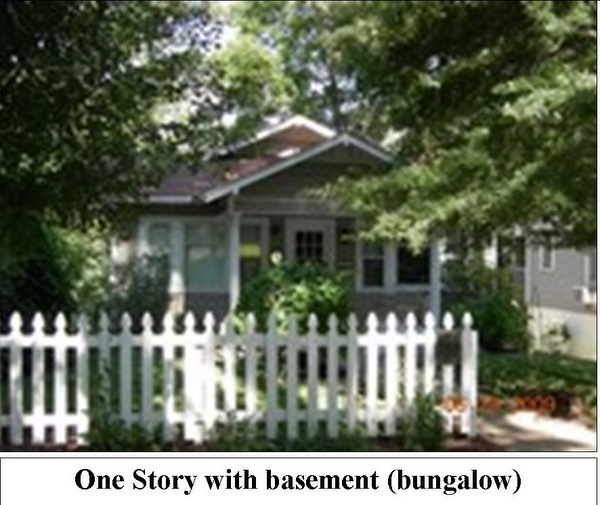
When you see a house for sale like this one in an Internet Listing, you first note the “Style” as “One Story with Basement”. This is a required data field, so it should not be missing from the listing detail. This cross gabled style was most common from around 1917 to 1922 or so. There are several other styles of one story with basement homes, but the below information should be fairly common to all.
I happen to be looking at one of these right now in Seattle. The mls Listing says 1,550 sf. 1,550 sf sounds like a decent sized house…until you go to the house and say “too small”. In fact, let’s look at the actual comments from a client who viewed it at an open house.
(Note: In accordance with mls rules, the picture of the home is a “reasonable facsimile” from somewhere else in the Country. The rest of the detail is the actual info of a home viewed by my clients in Seattle. Mls rules prohibit identifying the actual home that is currently for sale, in a blog post.)
Actual Client Comments:
Hi Ardell,
We went to the Open House and here is what we liked:– Beautiful kitchen, good size
– Nice modern upgrades
– nice backyard and outside area
– Neighborhood feel and street was nice and quietThings we didn’t like:
– two small bedrooms on main floor, master in basement.
-The setup doesn’t seem conducive to a young family. The rooms were VERY small on the main floor. Living room was small, but if we had to deal with this we could…just not ideal. No dining area or even any room for a table
– House runs on oil. Not sure we like the idea of that
Now that the client has identified some likes and dislikes…we look at the dislikes and check that info against the home’s “main floor footprint”. Not all “1,550” sf homes are alike. You need to break that down to save yourself a lot of time and trouble in your home search process.
An oddity in the Seattle Area as to how we identify square footage in the mls, requires that your FIRST step be to go to the King County Parcel Viewer to identify the square footage of the house (main floor footprint) vs the basement level.
What this client is actually saying, and not surprisingly, is that “a bungalow” may be too small for a family planning to have children.
The Breakdown of the house from the King County Parcel Viewer tells us that while the mls allows the description of “1,550 sf” for “the house”, this is really a 775 sf house with a basement.
That is how using this process for subsequent home selections can save you a ton of time and disappointment.
Let’s look at the home details and learn from both the data and the feedback from the client.
The County Record for this house, plus the mls system data, tells us:
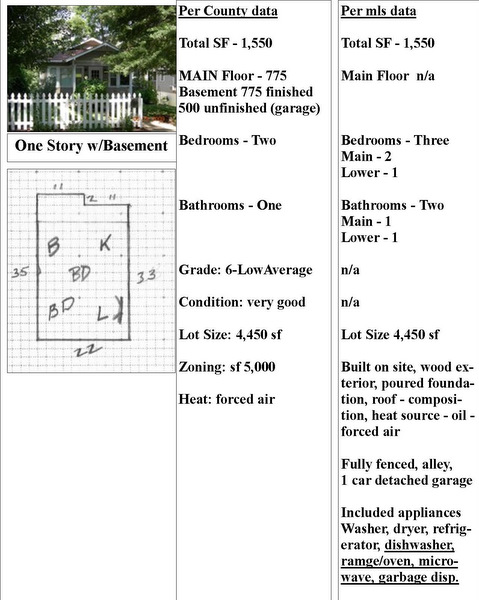
You can use the above format as a general template. If you are lucky, you will find a little hand drawn sketch of the original main floor footprint from the County Records site, as I did here.
A few notes:
– Lot size of 4,450 sf is acceptable…but smaller than current zoning requirements
– Oil heat…but forced air vs baseboard system. Forced air can be converted to gas and even have air conditioning, as long as gas is “available” in the street. A quick search of the area for neighbors with gas heat and or cooking tells me it is available, and in fact the majority of homes in the area use gas vs oil at present. Note- where is this oil TANK?
– Main floor foorprints of 800 sf are likely too small (I generally like to see at least 1,000 sf)
– Three bedrooms on one level likely preferred, but master on main and two up may work. (Note: There was no such thing as “a master bedroom” at the time this home was built. Master Bedrooms came out sometime after I was born 🙂 which would be 1954. Not common until the 70s or early 80s. “Where is the master bedroom?” may be an odd question if you are looking at a small home built in 1915.
– “dishwasher” included is often a strong indication of a kitchen upgrade, since dishwashers did not exist in 1915. However that upgrade may have been anytime since the 70s when dishwashers became more commonplace.
– an EXTRA 500 sf detached garage is a considerable feature, especially with alley access, as long as it doesn’t take up the whole yard.
Looking at the sketch, the home “as built” was likely 22 feet across and 33 to 35 feet “deep”. Assuming you need 3′ to “pass” into the rest of the home, that leaves only (22-3) 19 feet for the width of both the bedroom and living room on a combined basis. Hence the “bedroom is small” and “living room is small”.
Once you have the basics covered by seeing a few homes, you can save yourself, and the homeowner, a lot of time and trouble by checking some of these things in advance. Master in the basement is noted in this case in the mls detail. The main floor being less than 800 sf is noted in the County Record.
By checking both the mls data AND the County Record data, you can better set your expectations before going to view a home.
If the seller left their home with the baby and drove around the block for a half hour and the feedback is “I don’t like the master bedroom being in the basement”, the seller will often get a little ticked off (or a LOT) given that information was available prior to viewing the home.
Coming up with some general parameters based on viewing homes at Open Houses or viewing vacant homes for sale, can save you and the seller a lot of time, trouble and frustration.
“A House is a Box you LIVE in”.
There are really not a lot of variations as to how that “box” can be constructed, as noted in that linked post. You really shouldn’t have to visit 100 homes to find the one that is best for you.
Making some general observations, and charting them out as you go
(or having your agent do that for you)
may help to keep you from “settling” for a house that you really don’t want,
just because you are tired of “the process”.
I will cover the other “basic” home styles in subsequent posts, and link them below. This multi-part series should help make your home search process a lot more productive, and enjoyable.
Today’s Homebuyers Like Hardwood Floors
Whether it’s a new house or an old house, people like hardwood floors better than carpet, especially on the main floor.
Looking at the stats for North King County, a home without hardwood floors is about 2X as likely not to sell, especially at a price point of $400,000 or more for the home. About 24% to 26% of homes that “expire”, or homes still on market and not sold, do not have hardwood floors. Compare that to only 14% of SOLD homes without hardwood floors and you see that 86% of recent home buyers chose a home that had hardwood floors.
Wide plank, narrow plank, light oak, dark finish…lots of variances as to preference of TYPE of hardwood floor. But hands down, even if the new buyer refinishes the floors to a different color, they choose homes with hardwood floors that they can refinish over homes that would need hardwood floors installed.
While “What type of carpet to use to sell your home?” has not changed much…the better answer for the main living areas is hardwood…hands down.
The “new” preferred color of hardwood is less red than the once popular Brazilian Cherry, darker than the blonde tones of yesteryear, but not quite as dark as the short lived chocolate brown craze that lasted about a millisecond.
A warm chestnut brown is the color of the day.
It’s great for the floors…but a little dull for the kitchen or bathroom cabinetry. The new warm chestnut brown hardwoods are best used when the kitchen and main floor baths are a light colored ceramic tile or a laminate floor that blends the color.
Armstrong calls the color “gunstock”. It’s darker than light…lighter than dark…and solidly BROWN vs orange or red tones. Much easier to decorate a room without clashing with the tone of the hardwoods when using this color in many and varied rooms in the house. As a matching cabinet color choice though…I don’t think that trend will last. It’s just too darned dull to have as a kitchen cabinet color.
If after reading this you have any questions as to the color I am talking about…just visit any new model homes…it’s all the rage…and they are pretty much ALL using it in their model homes.
********
(Stats in this post not compiled, verified or published by The Northwest Multiple Listing Service.)
